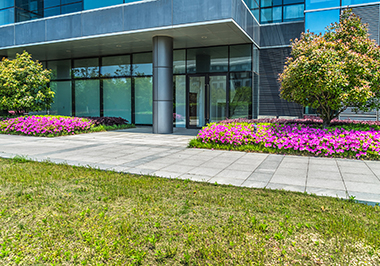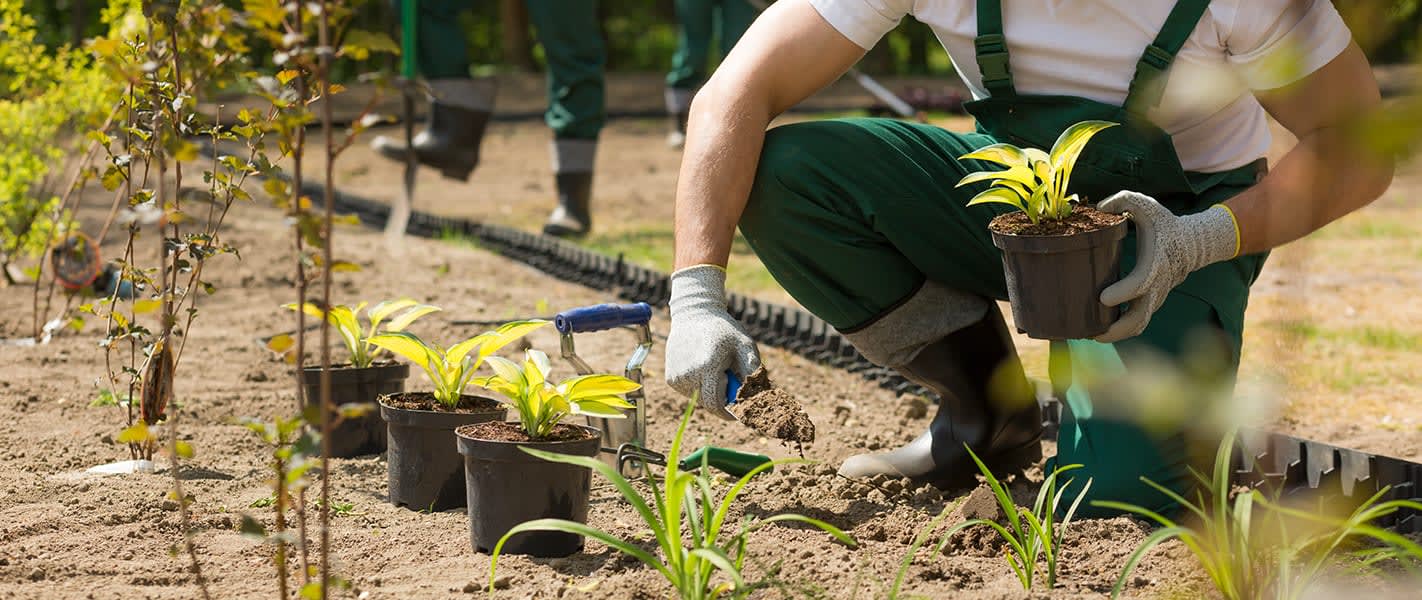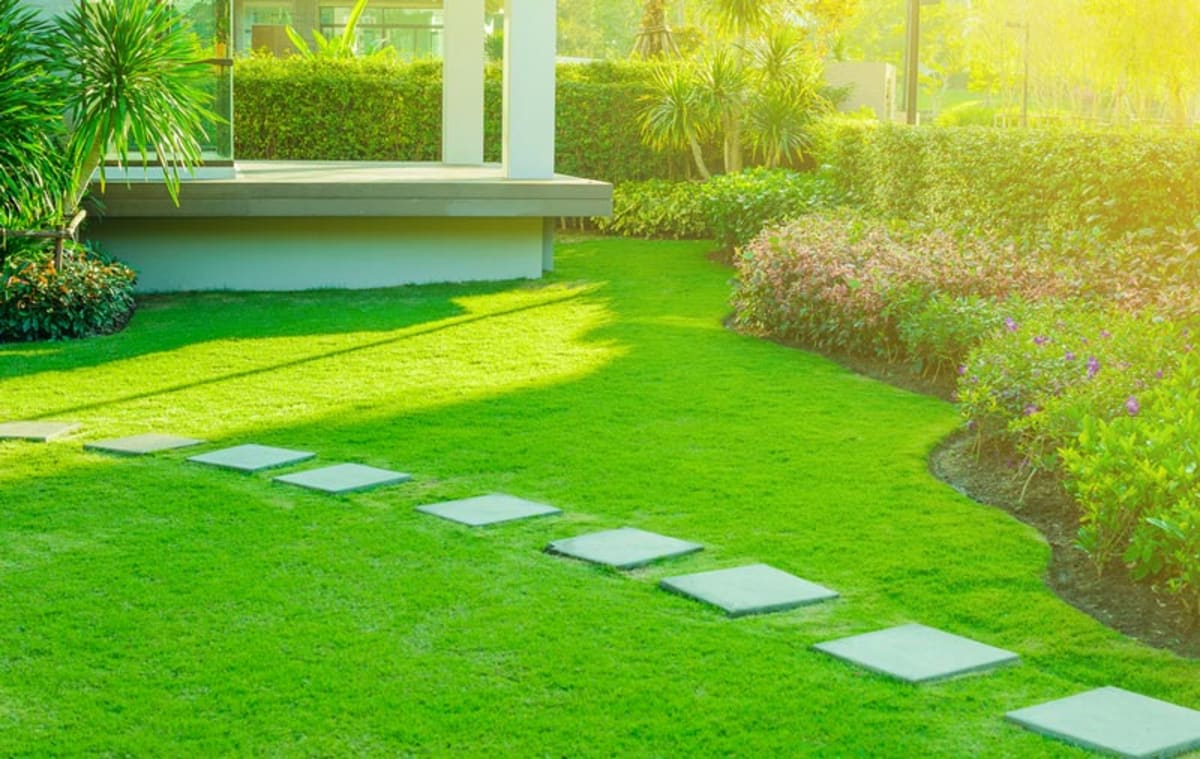Comprehending the Comprehensive Extent of Functions in Expert Landscaping Services
The considerable range of professional landscaping services incorporates a selection of basic components - landscaping services. It includes landscape style principles, plant choice, and hardscaping attributes. In addition, it addresses watering systems and upkeep strategies. Each element plays a vital role in developing practical and cosmetically pleasing exterior spaces. Understanding how these components interact can expose much regarding the art and scientific research of landscape design. The journey into this detailed field is just beginning.
Landscape Style Concepts
Effective landscape design principles are crucial for developing harmonious outdoor rooms that boost both visual allure and functionality (Learn More). These concepts guide the setup of components within the landscape, making sure a cohesive visual experience. Secret components include balance, which disperses aesthetic weight evenly; proportion, which associates the size of numerous aspects to each other and the area; and unity, which develops a feeling of wholeness via constant styles and products

Plant Option and Installation
In the domain of professional landscape design, plant selection and installation play a vital function in achieving a prospering garden. Emphasizing indigenous plant advantages, seasonal considerations, and the particular dirt and sunlight requirements of each types guarantees a lasting and aesthetically pleasing landscape. Mindful planning in these locations not only enhances biodiversity yet likewise advertises long-lasting eco-friendly health and wellness.
Indigenous Plant Advantages
Why should homeowners think about indigenous plants for their landscaping tasks? Native plants use numerous advantages that boost both looks and environmental sustainability. They are well-adapted to regional environments, requiring much less water and upkeep compared to non-native types. This strength reduces the requirement for chemical plant foods and pesticides, promoting a much healthier ecosystem. Additionally, indigenous plants give habitat and food for regional wild animals, consisting of pollinators, which can increase biodiversity in suburbs. Their familiarity with regional dirt and climate conditions also causes far better development prices and longevity. By selecting native plants, house owners not just develop aesthetically appealing landscapes but also contribute to environmental conservation, making a favorable effect on their neighborhood setting. Indigenous plants stand for a clever selection for landscape design tasks.
Seasonal Plant Considerations
Home owners that have actually welcomed indigenous plants in their landscape design can additionally improve their outside areas by thinking about seasonal plant choices. By integrating plants that flourish in particular seasons, they can create visually attractive and dynamic landscapes throughout the year. Springtime might introduce lively flowers like daffodils and tulips, while summer can showcase lavish vegetation and vibrant perennials. Autumn presents a scheme of warm tones with asters and goldenrods, while winter can be accentuated with evergreens and decorative lawns for structure. Professional landscaping companies usually suggest choosing plants that not only enhance existing native species yet likewise provide year-round passion and assistance neighborhood wildlife. This thoughtful method to seasonal plant selection assures a continually advancing and lasting garden setting.
Soil and Sunshine Requirements
Successful landscape design hinges on recognizing the certain soil and sunshine needs of plants. Various species grow under varying problems, requiring a mindful evaluation of both variables during the option process. Dirt types, such as sandy, clay, or fertile, influence drain, nutrient accessibility, and origin advancement. In addition, pH levels can influence plant health, requiring dirt testing to identify suitability. Sunlight needs vary significantly; some plants prosper completely sun, while others prefer full or partial color. A professional landscaper takes into consideration these elements to ensure peak development and visual appeal. By lining up plant selections with the environment's certain features, landscapes can achieve sustainability, durability, and aesthetic harmony, eventually causing effective plant establishment and long-lasting maintenance.
Hardscaping Attributes and Construction

While landscaping typically evokes photos of lush plant and vivid blossoms, hardscaping attributes play a vital duty in specifying outside areas. These aspects, which consist of outdoor patios, pathways, keeping walls, and decorative stonework, offer structure and capability to backyards and yards. Hardscaping makes use of products such as concrete, block, timber, and rock, permitting diverse layouts that match the natural landscape.
The construction of hardscaping attributes needs careful preparation and execution to guarantee durability and visual allure. Professionals assess website conditions, water drainage, and spatial connections to create natural outside atmospheres. Proper installment techniques are important, as they avoid issues like erosion and changing with time.
Integrating hardscaping not just improves the aesthetic interest of a property however also assists in exterior activities, making it a basic aspect of complete landscaping services. Eventually, thoughtful hardscaping adds to both the functionality and appeal of exterior spaces.
Irrigation Equipments and Water Management
Effective watering systems and water monitoring are vital elements of specialist landscape design, as they guarantee that plants get the needed hydration for ideal growth. These systems can differ from straightforward drip irrigation setups to advanced computerized automatic sprinkler, designed to satisfy the certain demands of Homepage varied landscapes. Correct water administration not just maximizes water use, reducing waste, but also improves plant health and wellness and lessens condition threats.
Landscape design specialists analyze numerous factors, including soil kind, plant varieties, and neighborhood environment, to create customized watering remedies. In addition, including rain harvesting strategies can better boost sustainability and performance. Routine upkeep of irrigation systems is vital to preserve performance and avoid leaks, which can result in water loss and enhanced costs (Learn More). Eventually, a well-designed watering system plays a critical duty in protecting the visual charm of exterior areas while advertising environmental stewardship within professional landscaping techniques
Yard Treatment and Maintenance Approaches
Lawn treatment and maintenance methods are fundamental for accomplishing a lavish, healthy backyard that enhances the general landscape. These strategies include numerous practices focused on promoting suitable development and aesthetic charm. Regular mowing is necessary, as it urges thick, even development while avoiding weeds from developing. Additionally, appropriate fertilizing offers needed nutrients, with applications customized to the particular yard type and dirt problems.
Watering methods should focus on deep, irregular watering to encourage root growth, while aeration boosts soil structure and advertises vitamins and mineral absorption. Pest and disease administration is likewise crucial; identifying problems early permits reliable therapies that minimize damage.
Overseeding can invigorate slim or broken yards, improving density and color (landscaping). By executing these targeted yard care techniques, landscaping professionals can guarantee that yards remain dynamic and healthy throughout the seasons, greatly adding to the total appeal of the residential or commercial property
Seasonal Landscape Treatment and Upkeep
As the seasons change, correct landscape treatment ends up being important for maintaining the health and elegance of exterior areas. Each season offers one-of-a-kind difficulties and demands. In spring, landscape specialists concentrate on pruning, growing, and feeding to motivate growth. Summer season demands regular watering, weed control, and parasite administration to safeguard freshly developed plants.

Throughout the year, seasonal landscape maintenance guarantees that outside locations stay healthy and balanced and visually attractive. Professional services can offer customized maintenance plans that adjust to the specific needs of each period, permitting residential property proprietors to delight in lively landscapes year-round. Overall, seasonal care is an essential aspect of professional landscaping that advertises long life and aesthetic value.

Sustainable Landscaping Practices
An expanding variety of homeowner are embracing sustainable landscape design techniques to create eco-friendly outside spaces. These practices concentrate on saving sources, enhancing biodiversity, and minimizing ecological influence. Indigenous plants are frequently chosen for their low tide requirements and compatibility with neighborhood ecosystems, decreasing the demand for chemical fertilizers and chemicals. Rainfall yards and permeable paving are employed to manage stormwater drainage, advertising groundwater recharge and minimizing erosion.
Additionally, sustainable landscape design includes organic gardening techniques that focus on soil health and promote all-natural bug control. Efficient watering systems, such as drip irrigation and rain harvesting, assistance optimize water usage. Furthermore, landscape designers significantly promote for the use of recycled products, such as recovered wood and rocks, to reduce waste. By adopting these lasting practices, homeowner not just add to environmental preservation yet also develop aesthetically pleasing settings that can flourish with marginal maintenance.
Regularly Asked Questions
The length of time Does a Landscape Design Project Normally Take to Total?
Generally, a landscape design project can take anywhere from a few days to numerous weeks to complete, relying on the project's dimension, layout, and complexity needs. Elements such as climate and source availability likewise affect timelines.
What Factors Influence the Expense of Landscape Design Services?
Various elements influence landscaping service prices, consisting of task dimension, layout intricacy, worldly high quality, labor costs, geographic location, and seasonal demand. Each element adds distinctly to the total economic demands of a landscape design job.
Are Landscaping Services Available Year-Round?
Landscaping services are generally available year-round, although schedule might differ based on region, seasonal climate condition, and specific service offerings. Some services might be restricted during extreme weather or off-peak periods.
Do Landscaping Firms Deal Guarantees on Their Work?
Many landscape design business do provide warranties on their job, which can vary in size and protection. Clients are urged to ask about specific terms, guaranteeing they understand what is assured and any type of conditions that use.
Can I Design My Landscape Without Specialist Assist?
Yes, people can create their landscapes without professional aid. Nevertheless, they might lack competence in plant selection, design, and environmental factors to consider, potentially bring about less reliable designs that can require expensive adjustments later on.
In the domain of specialist landscaping, plant choice and installment play a vital duty in achieving a growing garden. Property owners that have embraced native plants in their landscape design can further enhance their outside rooms by considering seasonal plant choices. Effective landscape design pivots on understanding the particular dirt and sunshine demands of plants. Effective irrigation systems and water administration are crucial parts of professional landscaping, as they guarantee that plants get the needed hydration for ideal growth. Landscaping professionals evaluate different aspects, consisting of dirt kind, plant varieties, and neighborhood environment, to create customized watering remedies.